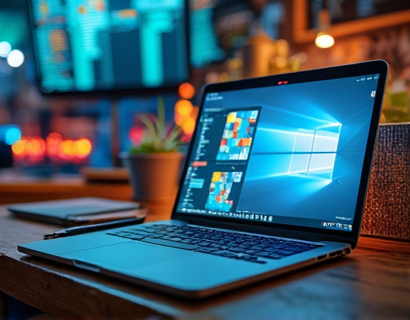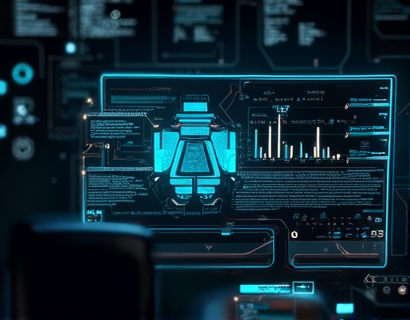Decentralized File Management: Revolutionizing Business Collaboration
In the digital age, efficient and secure file management has become a cornerstone for business collaboration and productivity. Traditional centralized file management systems often face challenges such as single points of failure, security vulnerabilities, and inefficiencies in access control. A decentralized approach to file management offers a promising solution, providing a robust, secure, and efficient platform for teams to collaborate. This article delves into the benefits and workings of decentralized file management, highlighting how it can transform the way businesses handle their critical information.
Understanding Decentralized File Management
Decentralized file management refers to a system where files and data are distributed across a network of nodes rather than being stored in a central server. This architecture eliminates the need for a single point of control, making the system more resilient to failures and cyber attacks. Each node in the network has a copy of the data or a portion of it, ensuring redundancy and availability. This decentralized structure not only enhances security but also improves performance by reducing latency and increasing data access speed.
Key Benefits of Decentralized File Management
The transition to a decentralized file management system brings numerous advantages to businesses and teams. One of the most significant benefits is enhanced security. By distributing data across multiple nodes, the risk of a single breach compromising all data is greatly reduced. Even if one node is compromised, the rest of the network remains intact, ensuring that critical information remains secure. This decentralized approach also minimizes the risk of data loss due to hardware failures or natural disasters, as multiple copies of the data exist across the network.
Another key advantage is improved collaboration. Decentralized file management platforms provide a seamless and user-friendly interface for team members to access, share, and collaborate on files in real-time. This eliminates the need for cumbersome email attachments and version control issues, streamlining the workflow and boosting productivity. Team members can work on documents simultaneously without the fear of overwriting each other's changes, as the system automatically manages versions and conflicts.
Decentralization and Data Sovereignty
Decentralization not only enhances security and collaboration but also empowers organizations by giving them greater control over their data. In a decentralized system, data sovereignty is maintained as organizations can choose where and how their data is stored and processed. This is particularly important for businesses operating in regions with strict data protection regulations, such as the GDPR in Europe. By keeping data within their jurisdiction, companies can ensure compliance and avoid potential legal issues.
Furthermore, decentralized file management reduces dependency on third-party service providers. Traditional cloud storage solutions often require businesses to trust a single provider with their data, which can be a risk if the provider experiences issues or goes out of business. With decentralization, organizations can maintain control over their data without relying on external entities, ensuring continuity and reliability.
Technological Foundations of Decentralized File Management
The implementation of decentralized file management relies on advanced technologies such as blockchain, peer-to-peer (P2P) networks, and distributed ledger technology. Blockchain, known for its role in cryptocurrencies, provides a secure and transparent way to manage data transactions. Each file or data block is recorded on a blockchain, creating an immutable and verifiable history of all changes and accesses. This transparency ensures accountability and trust among collaborators.
P2P networks are the backbone of decentralized systems, enabling direct communication and data sharing between nodes without the need for a central server. This not only improves efficiency by reducing network congestion but also enhances security by eliminating single points of failure. Distributed ledger technology complements these technologies by providing a decentralized database that is managed by multiple participants, ensuring data integrity and consistency.
User Experience and Interface
A critical factor in the success of any file management system is the user experience. Decentralized file management platforms are designed with a focus on ease of use and intuitiveness. The interface is user-friendly, allowing team members to navigate and manage files with minimal training. Key features include a drag-and-drop file upload, search functionality that spans the entire network, and real-time collaboration tools. These features ensure that users can quickly find and access the information they need, without being overwhelmed by complex interfaces.
Moreover, the platform supports various file types and formats, ensuring compatibility and versatility. Users can upload, share, and edit documents, images, videos, and other media seamlessly. The system also integrates with popular productivity tools, such as calendars and task managers, further enhancing the overall workflow.
Scalability and Performance
One of the often-overlooked aspects of decentralized file management is scalability. As businesses grow and the volume of data increases, the file management system must be able to handle the load without compromising performance. Decentralized platforms are inherently scalable, as additional nodes can be added to the network to accommodate growing data needs. This scalability ensures that the system can evolve with the organization, maintaining high performance and reliability.
Performance is another critical factor. Decentralized file management systems are optimized to provide fast data access and low latency, even across large networks. By distributing the load across multiple nodes, the system can handle high traffic and large file transfers efficiently. This is particularly beneficial for global teams and organizations that require rapid data access across different time zones and locations.
Case Studies and Real-World Applications
Several organizations have successfully implemented decentralized file management systems, reaping the benefits of enhanced security, collaboration, and efficiency. For instance, a multinational corporation with offices across multiple countries adopted a decentralized file management solution to streamline its document sharing and collaboration processes. The new system eliminated the need for cumbersome file transfer protocols and reduced the risk of data breaches. Employees reported a significant improvement in productivity, with faster access to files and reduced downtime due to system failures.
Another example is a creative agency that uses the decentralized platform for project management and file sharing. The agency's team members can collaborate on design files, videos, and client presentations in real-time, with version control ensuring that the most up-to-date files are always accessible. The decentralized approach has not only improved collaboration but also enhanced the agency's ability to meet tight deadlines and deliver high-quality work.
Challenges and Considerations
While the benefits of decentralized file management are clear, there are also challenges and considerations that organizations should be aware of. One of the primary challenges is the initial setup and migration of existing data to a decentralized system. This process can be complex and time-consuming, requiring careful planning and expertise. However, the long-term advantages often outweigh the initial investment.
Another consideration is the need for user education and training. Since decentralized systems operate differently from traditional centralized solutions, team members must be trained to use the new platform effectively. Providing comprehensive training and support can help overcome this challenge and ensure a smooth transition.
Interoperability is also an important factor. As organizations often use a variety of tools and platforms, the decentralized file management system should be compatible with existing workflows and technologies. Ensuring seamless integration can enhance the overall user experience and maximize the benefits of the decentralized approach.
Future Trends and Innovations
The landscape of decentralized file management is rapidly evolving, with ongoing innovations and advancements. One emerging trend is the integration of artificial intelligence (AI) and machine learning (ML) to enhance the functionality of decentralized platforms. AI can be used to automate tasks such as file organization, backup, and security monitoring, further improving efficiency and reducing the workload on users.
Another area of innovation is the development of cross-platform solutions that allow for seamless interaction between different decentralized systems. This would enable organizations to use a unified file management approach across various tools and services, enhancing flexibility and interoperability.
Additionally, the rise of Web3 and the metaverse presents new opportunities for decentralized file management. As more businesses explore virtual and augmented reality environments for collaboration and communication, decentralized file management solutions will play a crucial role in ensuring secure and efficient data handling in these immersive spaces.
Conclusion
Decentralized file management represents a significant shift in how businesses and teams handle their critical information. By offering enhanced security, improved collaboration, and greater control over data, this approach addresses many of the challenges faced by traditional centralized systems. As organizations continue to seek more efficient and secure solutions, decentralized file management is poised to become a cornerstone of modern business collaboration. Embracing this technology not only ensures compliance and data integrity but also drives innovation and productivity, positioning businesses for success in the digital age.











































